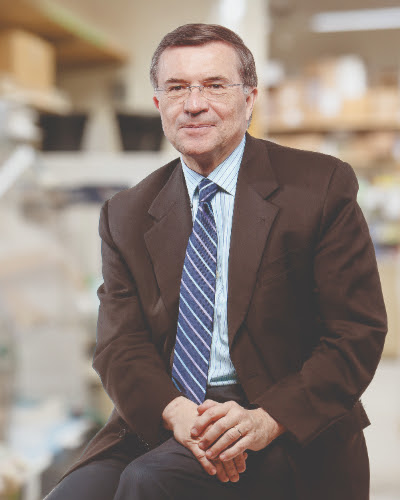THINK magazine profiles CIT ’68, physics alumnus Terry Sejnowski, Dept. of Physics PSAG (Physics Strategic Advisory Group) member, honored this year with the highest award from the Case Western Reserve University Alumni Association.
- See THINK article here, including news about a new Sejnowski-Hinton Prize that will recognize collaborations by researchers younger than 40 who propose novel theories of how the brain works
- See also Terrence J. Sejnowski (CIT ’68) earns 2025 Distinguished Alumni Award
Excerpt:

Terrence J. Sejnowski, CIT ’68, physics, Salk Institute, Professor and Laboratory Head, Computational Neurobiology Laboratory, Francis Crick Chair
Whatever the topic—gravity waves or brain waves, nebulae or neurons—Terrence Sejnowski, (CIT ’68) PhD, dives deep.
Sejnowski began his scientific career pondering exotic deep-space phenomena such as black holes, gravitational waves and the nebulae that give birth to stars.
In graduate school, however, his interest shifted to neuroscience. And for the past 50 years—much of it spent at the California-based Salk Institute for Biological Sciences, one of the world’s premier biomedical research institutions—Sejnowski has sought to unravel the deepest mysteries of the human brain: how it comprehends the world, stores memories and learns new skills.
“Terry is a pioneer of neuroscience, and he’s a pioneer of AI. It’s not for nothing that he is one of the single handful of people who are members of all four national academies.”
— Glenn Starkman, a CWRU Distinguished University Professor and vice-chair of the Department of Physics
In the process, the Cleveland native has revolutionized two fields—neuroscience and artificial intelligence (AI)—and made lasting contributions to many more, including discoveries that could lead to new treatments for a wide range of neurological disorders. He also helped forge national science policy as an advisor to the White House BRAIN (Brain Research through Advancing Innovative Neurotechnologies) Initiative and became a prolific science communicator, explaining advances in neuroscience and AI through books, media appearances and a free online course (“Learning How to Learn,” offered through Coursera) that has reached nearly 5 million people around the world.
See full article at THINK: The Magazine of Case Western Reserve University
